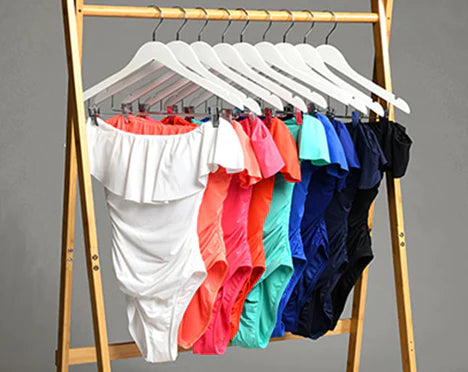While it might be nice at times to lay out in the sun, taking in all its warmth, we have to take caution with sun exposure. Your goal when lounging might be to get a golden tan, but you can just as easily walk away looking like a lobster with a severe sunburn.
Even though health warnings about sun damage are nothing new, many of us still go ahead and subject our skin to mild sunburn on occasion. According to the CDC, more than one-third of adults and nearly 70% of children admit they’ve gotten sunburnt within the past year. The continuous exposure of your skin to the sun throughout the years can lead to many issues later in life, such as early wrinkling and age spots, which increases the probability of contracting skin cancer.
We know this is scary to hear but that’s not our goal; we simply want to inform people and help prevent any issues in the future by shedding light on how important adequate sun protection is. So, in order to keep your skin safe, it’s best to come up with a strategy and find how to treat your sunburns appropriately if they do happen.
What Causes Sunburn?
We all know the basics of how we get a sunburn. What happens is that when the skin is exposed to the sun for an extended period of time, eventually it burns, and the affected area becomes red and irritated.
Beneath the skin things are a little more technical. Basically, the sun gives off three different wavelengths of ultraviolet light: UVA, UVB, and UVC. UVC doesn’t actually reach the Earth’s surface but both the other types do. Not only do they reach the surface of our planet, but they are also capable of penetrating our skin, being the cause of skin damage when you get a bad sunburn.
Getting a sunburn is the most obvious sign that you’ve been out in the sun for too long, but sun damage isn’t always as visible. Underneath your skin, ultraviolet light can change your DNA, leading to the premature aging of your skin. This damage to your DNA, over time, can result in skin cancers, including melanomas (which are deadly).
How long you can be out in the sun before getting a sunburn depends on a couple of factors, such as your skin type, the skin’s intensity, and how long you’re exposed to the sun.
What Are the Signs of Sunburn?
You’ll know you have a sunburn when your skin turns red and begins to hurt. If you’re dealing with a serious burn, the area can also develop swelling and sunburn blisters. In some cases, you can feel like you have the flu, and feel feverish, have chills, nausea, headaches, and weakness.
After the first few days, you may notice peeling skin, pigment changes, and itching as your body starts the healing process.
How To Get Relief From Sunburn
Sunburn treatment requires “attacking” it from two fronts essentially. You want to simultaneously relieve the reddened, inflamed skin while also easing pain. If you get a sunburn there are a few ways to treat it at home.
Like any other burn, you’ll want to release the heat from your skin so running cold water over the burn will help the area cool down.
Use a lotion or a gel to take the sting out of your sunburn, and gently rub it over the burn to alleviate any discomfort. Some good ingredients for these to have are menthol, camphor, and aloe vera, but you can always ask your pharmacist or dermatologist for a recommendation. Try keeping the cream or gel cool by storing it in the fridge to further help with soothing the burn.
Hydration is key — make sure you’re drinking a lot of cool water so you don’t become dehydrated. Remember that your skin is taking in a lot of your nutrient supplies to heal itself so replenishing those will be helpful.
Don’t go back out into the sun. While the burn is healing, try your best to avoid direct exposure to the sun until it is done healing. Wear protective clothing and use sunscreen with a high sun protection factor (SPF) to prevent further burns.
You can also take OTC (over-the-counter) nonsteroidal anti-inflammatory drugs like ibuprofen or naproxen, which can help with relieving the sunburn swelling, and pain you’re experiencing. In addition to pain-relieving medications, initial research also shows that orally taking up to 2000 IU of vitamin D can help with inflammation and damage from sunburn. Obviously, you should get medical advice from a healthcare professional before taking anything.
When Should You Seek More Help?
While most sunburns can easily be treated at home there are some cases where going to the doctor can be the best course of action. Below are some signs that it’s time to see a doctor:
- A fever of 102ºF or higher
- Chills
- Severe pain
- Headaches
- Sunburn blisters that cover 20% or more of your body — like your entire chest and abdomen
- Dry mouth, thirst, reduced urine output, dizziness, and fatigue -— all signs of dehydration
- If you notice any mark, bump, blemish, or mole that looks different, is growing or has started bleeding
These are all signs of something more serious, such as sun poisoning or a second-degree burn. If you start developing any of the following symptoms it’s best to reach out to your doctor and ask for advice:
How Can You Prevent Sunburn?
There are obviously ways you can prevent getting sunburnt.
Watching the Clock
Pay attention to when you’re going into the sun. The sun’s rays are strongest between 10 am and 4 pm so if you can stay indoors during those hours it’s highly advisable. If that isn’t possible then sticking to shady spots is the next best thing in avoiding being exposed to the sun for too long.
Wearing the Right Clothes
Making sure you’re wearing the right clothes can go a long way in helping you stay safe from the sun! If you’re going to be outdoors then you’ll want to wear sun-protective gear such as a broad-rimmed hat, a long-sleeved shirt cover-up, and some UV-blocking sunglasses.
If you’re spending a long time out in the water taking part in water sports or the like then it’s also good to wear a rash guard. When it comes to daily swimwear, wearing a one-piece bathing suit will always provide more coverage than a two-piece.
Use Sunscreen
One of the best ways of protecting your skin from sun damage is wearing sunscreen. Using a broad-spectrum sunscreen (one that protects against UVA and UVB rays) is one of the most essential aspects of any skincare routine. Make sure to cover up any exposed areas of skin liberally with at least one ounce.
When getting your sunscreen you want to make sure you’re at least buying one with SPF 30. If you’re very fair-skinned or have more sensitive skin look for ones with a higher SPF and specifically made for your skin type.
When applying the sunscreen keep these tips in mind:
- Apply the sunscreen about 30 minutes before going outside
- Even on overcast days make sure you’re applying sunscreen as UV rays can penetrate through the clouds
- Reapply the sunscreen every two hours, if you’re sweating a lot or going for swims apply it more often
- When wearing your sunscreen with makeup, apply the sunscreen first and then the makeup on top — alone foundation isn’t enough to protect from the sun rays, even if it does have some SPF in it
Talk to Your Doctor
Make sure to check with your doctor that any medication you might be on doesn’t affect how your skin reacts to the sun. For example, some antibiotics, antidepressants, and diabetes drugs can make the skin more sensitive.
This also goes for topical drugs such as Renova and Retin-A, which can make it very sensitive and lead it to burn much faster. If you’re taking any of these medications or any other that you’re unsure of the side effects of the sun, ask your doctor what the best way is to proceed with sun protection .
Conclusion
We know this can seem overwhelming but with all this information you can now head to the beach with the peace of mind that you know how to protect yourself and your loved ones appropriately.
Sources:
Sunburn Prevention and Treatment | Web MD
Dehydration - Signs, Symptoms, Causes, and Prevention | Web MD





